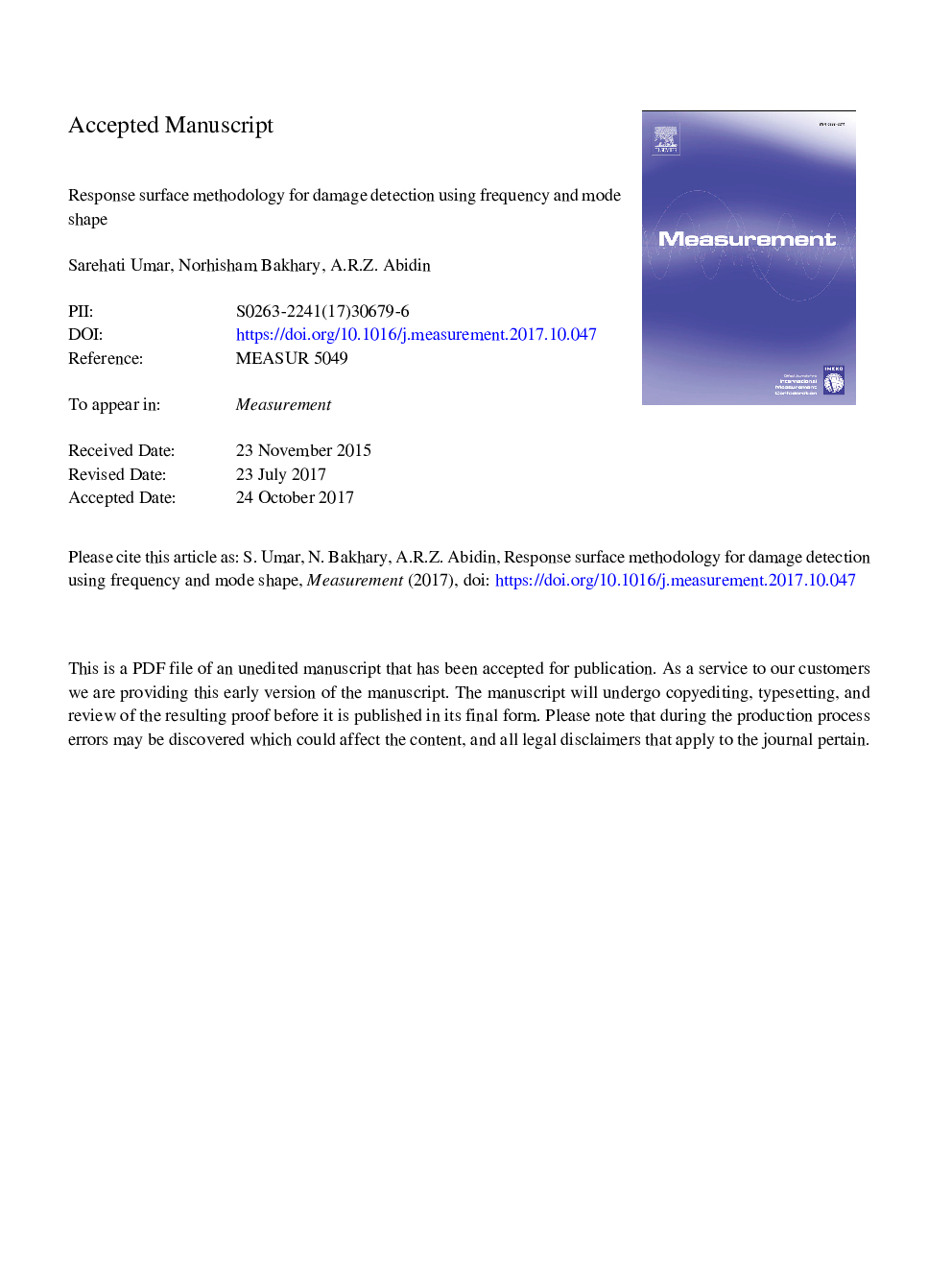| Article ID | Journal | Published Year | Pages | File Type |
|---|---|---|---|---|
| 7122145 | Measurement | 2018 | 23 Pages |
Abstract
Response surface methodology (RSM) has been proven applicable for updating finite element baseline models. Most RSM-based damage detection methods are frequency-based, limiting their application to small structures and symmetrical damage. This study therefore proposed a new RSM method that employs both natural frequencies and mode shapes. The efficiency of the proposed damage detection method is demonstrated through a numerical model of a simply supported beam and a laboratory-tested steel frame. To choose the best RSM design for damage detection, the effects of design of experiment (DOE) to the damage detectability is investigated. The DOEs studied include central composite design (CCDMRV and CCD64), Box-Behnken design (BBD) and D-optimal design (Dopt). The results show that RSM is a potentially useful approach for damage detection. The RS model based on the CCD sampling method with bigger sample size provides the best damage detection performance.
Related Topics
Physical Sciences and Engineering
Engineering
Control and Systems Engineering
Authors
Sarehati Umar, Norhisham Bakhary, A.R.Z. Abidin,
